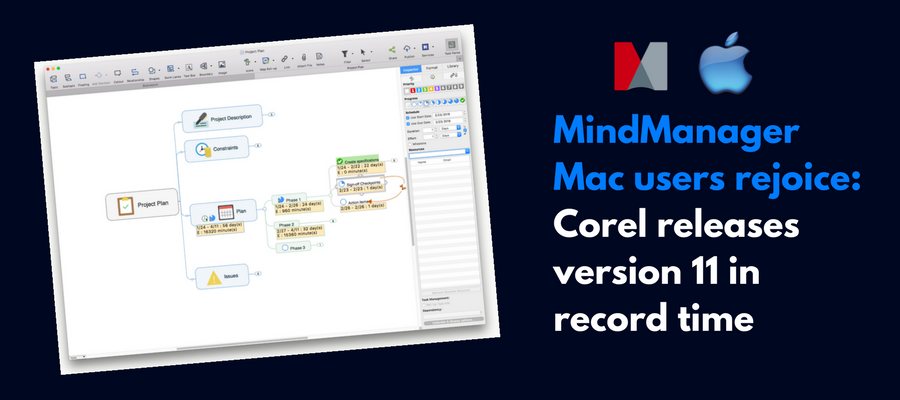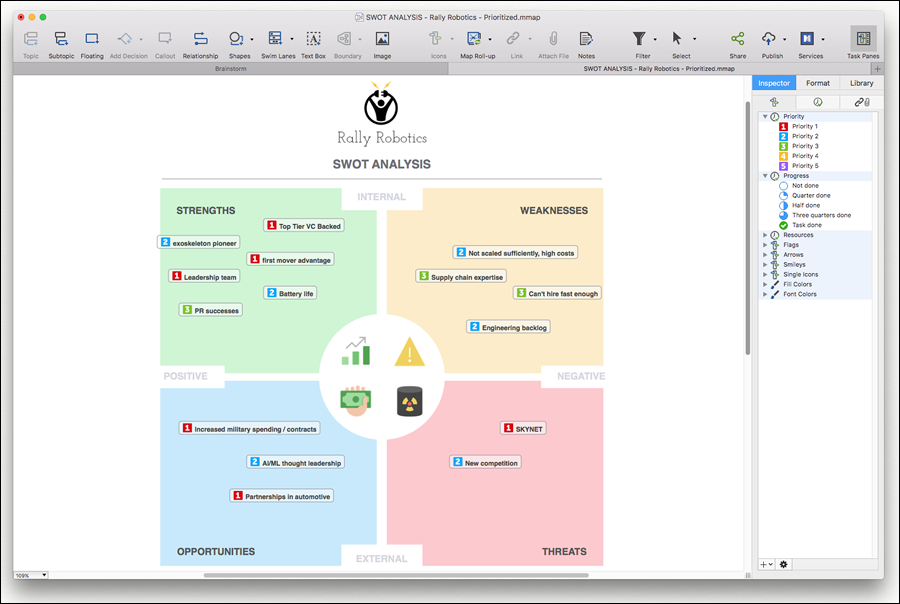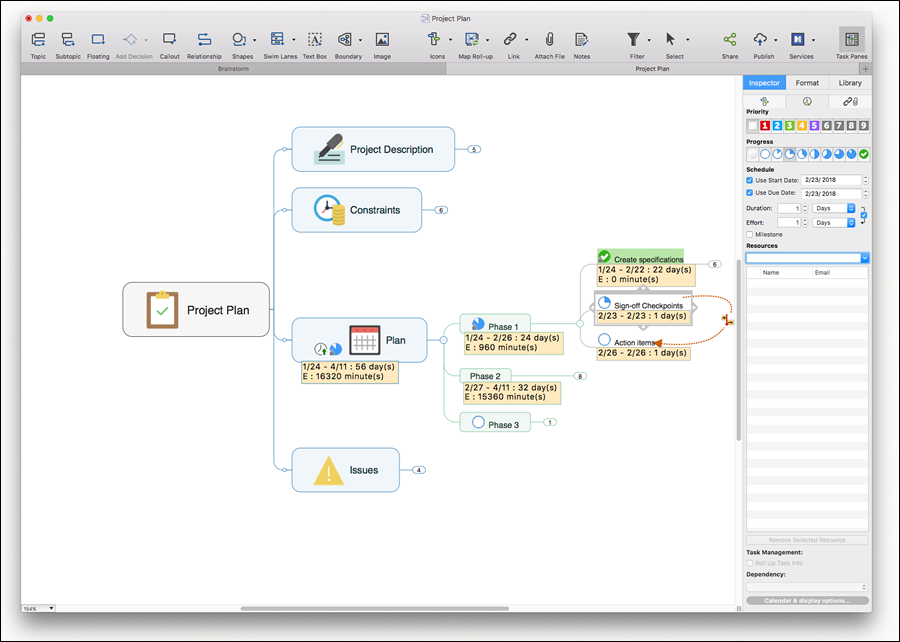Mac users of MindManager, rejoice! Corel is closing the gap between new versions of MindManager for Windows and Mac. Last month, the company launched MindManager 11 for Mac that nearly brings it to complete parity with the Windows version. This is much quicker than previous upgrades, which sometimes lagged up to a year.
Sometimes good things happen when you have a parent with deeper pockets!
In this review, we will focus on the most significant new features and improvements in MindManager 11 for Mac
MindManager 11 for Mac: What’s new and improved?
New diagram types: MindManager 11 for Mac gains the ability to create concept maps, workflows and timelines. As with the Windows version, you can use the program’s new drawing objects to create your own diagrams and then “lock” them so they’re not editable. In essence, they behave as if they are on the background layer. You can then populate your diagrams with floating topics and other elements. This is my favorite new functionality in the Windows version. I’m pleased to see it has now been added to the Mac version as well.
MindManager 11 for Mac includes a number of templates for each diagram type, both pre-filled with sample data and blank templates. Any of these can be modified and extended by unlocking their locked elements. This is very powerful. It will give business users a lot of control over customizing process diagrams and other visualizations to their needs.
Task management: MindManager 11 for Mac now offers a dedicated task panel on the right side of the workspace. In previous versions, this was handled by a floating inspector box. This means you can modify your tasks faster without having to mess with opening and closing an inspector. Like other side panel options, the task panel can be pinned open so it’s always visible. In addition, the new version of MindManager for Mac adds settings for efforts, milestones and four types of dependencies. It also accommodates roll-up summaries for task data.
Conditional formatting: Another cool new feature of the Mac version of MindManager that I loved on the PC version is conditional formatting. Depending upon what conditions a task meets, it is automatically colored red, yellow or green. You can customize what these colors mean by adjusting their options. In other words, if a certain criteria is met, a topic may be colored green. If the value of a topic exceeds a certain threshold, the program will color it yellow. Why does this matter? When you’re working with large mind maps, you learn to appreciate anything that gives you at-a-glance meaning and context. This new feature enables you to quickly do a visual skim of your map’s contents, looking for tasks that are out of scope. That’s a real time saver!
More powerful hyperlinks: MindManager 11 for Mac now supports multiple hyperlinks per topic. It also enables you to rename link labels. This is especially useful if you use a collaboration tool like Jira that tends to generate long, ugly hyperlinks.
Map rollups: MindManager for Mac now supports map roll-ups, including summarizing data from sub-maps. This makes it even more powerful from a dashboard management point of view, because you can pull in data from multiple places and summarize it in a convenient visual format.
Redesigned interface: Like the Windows version, MindManager’s programmers studied the most commonly-used program functions and regrouped them to make them easier to find. Also, more adjustments to topic and map properties have moved from inspector windows to the side panel. This makes it easier and faster for users to adjust their map’s properties.
New map sharing capabilities: Like MindManager 2018 for Windows, the Mac version now incorporates the program’s much-improved HTML 5 map export. It includes map and presentation views. Using the publishing settings, you can force the map viewer to open your mind map in presentation view. In addition, you can publish it with or without a password, allow download of the native .mmap file and you can brand map exports with your logo – nice! Finally, the program manages map updates intelligently. It doesn’t update the entire mind map to the viewer on the web – just the topics that have changed. This can come in quite useful if you have embedded a mind map in a blog post, you can easily publish updates to it.
Conclusion
Overall, I’m impressed with the progress that Corel has made in improving the MindManager product on both the Windows and Mac versions. With its unique take on diagramming, the software giant has transformed MindManager into a multi-functional tool for creating, publishing and sharing knowledge and information visualizations. I can’t wait to see what’s next!
MindManager 11 for Mac is priced at $179 for a perpetual license and $89 for an upgrade. This is almost half the price of the Windows version. I would guess this pricing is aimed at getting more disillusioned former MindManager Mac users back into the fold. What I’ve seen of this product is stable, fast and designed for excellent productivity. Why not give it a try using the free 30-day trial version?





Leave a Reply